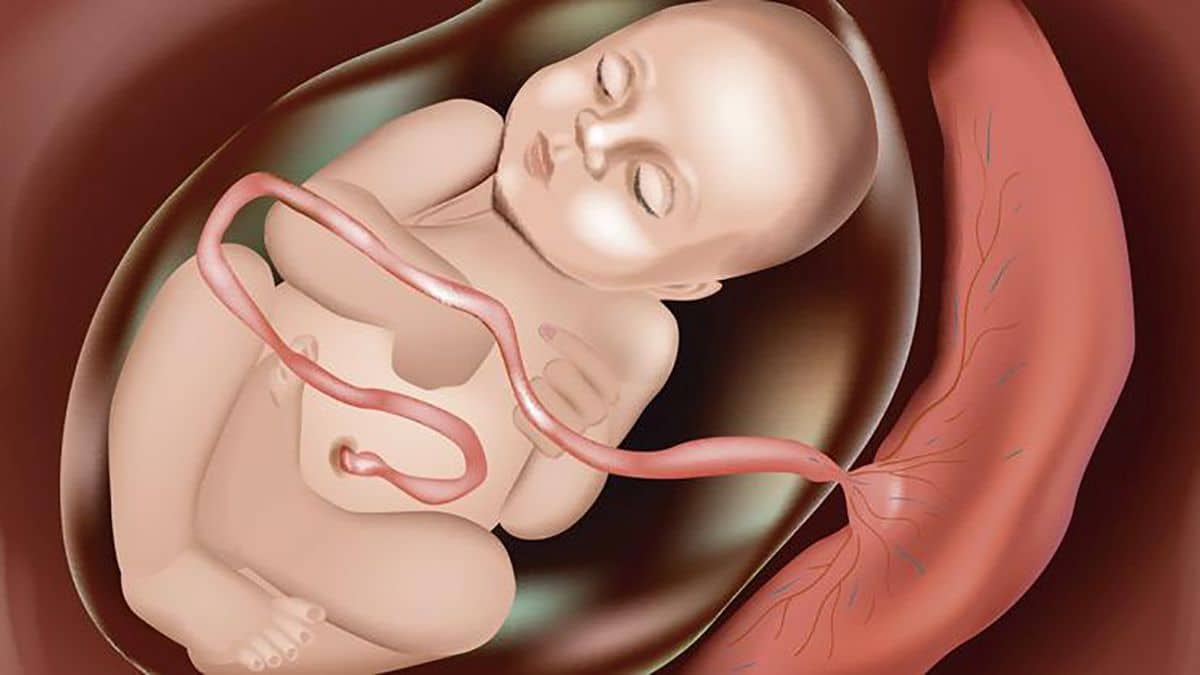
As the German philosopher Ludwig Feuerbach said: "We are what we eat", and in the case of fetuses it is totally true. And it is undeniable: our body is made up of molecules of substances that are derived from the food we eat on a daily basis.
In the mother's womb, the fetus can feed and breathe thanks to the placenta. This is how food and oxygen arrives.
When in the mother's womb, the fetus can feed and breathe through the blood circulating in the umbilical cord, which originates from the placenta. It is from this conduit, which connects the baby to the mother, that the baby can receive the substances he needs to live, just as if he were eating and breathing.
During the nine months of pregnancy, the placenta provides the fetus with continuous flow of food and oxygen and eliminates what the baby's metabolism does not need.
How does food get to the fetus?
Food can reach the fetus thanks to the chorionic villi, which form the embryonic part of the placenta. The placenta constitutes, at the same time, a barrier for part of the blood and a filter for the rest, that is, for substances that must be able to be exchanged between the mother and the baby in her womb, including the mother's hormones and antibodies.
Rich in capillaries, they absorb nutrients from the mother's blood vessels. In this way, the baby receives the food it needs, assimilating it from the mother's body. For this reason, it is very important that pregnant women maintain a healthy and balanced diet, because everything that reaches the baby will influence in their growth and health.
Although it is not possible to know exactly how long after the food reaches the fetus, essential nutrients are usually quickly ingested by the baby. To feel the movements, some mothers eat something sweet. This is because, unlike more complex macromolecules, glucose quickly reaches the baby through the placenta and umbilical cord.
How does fetal breathing occur?
Fetal respiration begins from twelfth week. While in the womb, the baby is submerged in amniotic fluid and cannot yet breathe autonomously through the lungs, which will only be functional at birth. Oxygen reaches the fetus through of the placenta and umbilical vein, leaving the maternal blood, in which it is more concentrated, and passing into the fetal blood which, on the contrary, is very poor, giving up carbon dioxide and waste to the first. It has been shown that a limited supply of oxygen can delay the development of the baby and that the placenta is sensitive to nicotine: that is why it is recommended to stop smoking during pregnancy. In contrast, activities that allow the mother to breathe deeply, such as play sports or climb stairsThey act as a healthy exercise for the baby.
In fact, it could be said that babies do not breathe at all when they are in the womb. Rather, feed on oxygen and other nutrients, such as vitamins and proteins, through the umbilical cord blood.
How long does it take for food to reach the fetus?
It seems that from the eighth week of pregnancy the fetus is endowed with taste buds, and later these papillae begin to connect with the brain, thus giving rise to the development of the sense of taste.
How does oxygen get to the fetus?
The fetus needs a constant supply of oxygen during the "perinatal" period immediately before and after birth. This oxygen is supplied by the mother through the placenta and umbilical cord until the baby is born and can breathe on its own.
What goes through the umbilical cord?
The umbilical cord connects the mother to the baby. Through the blood contained in the umbilical cord the baby receives food and oxygen throughout the gestation period, at the end of pregnancy it is about 55 centimeters long.